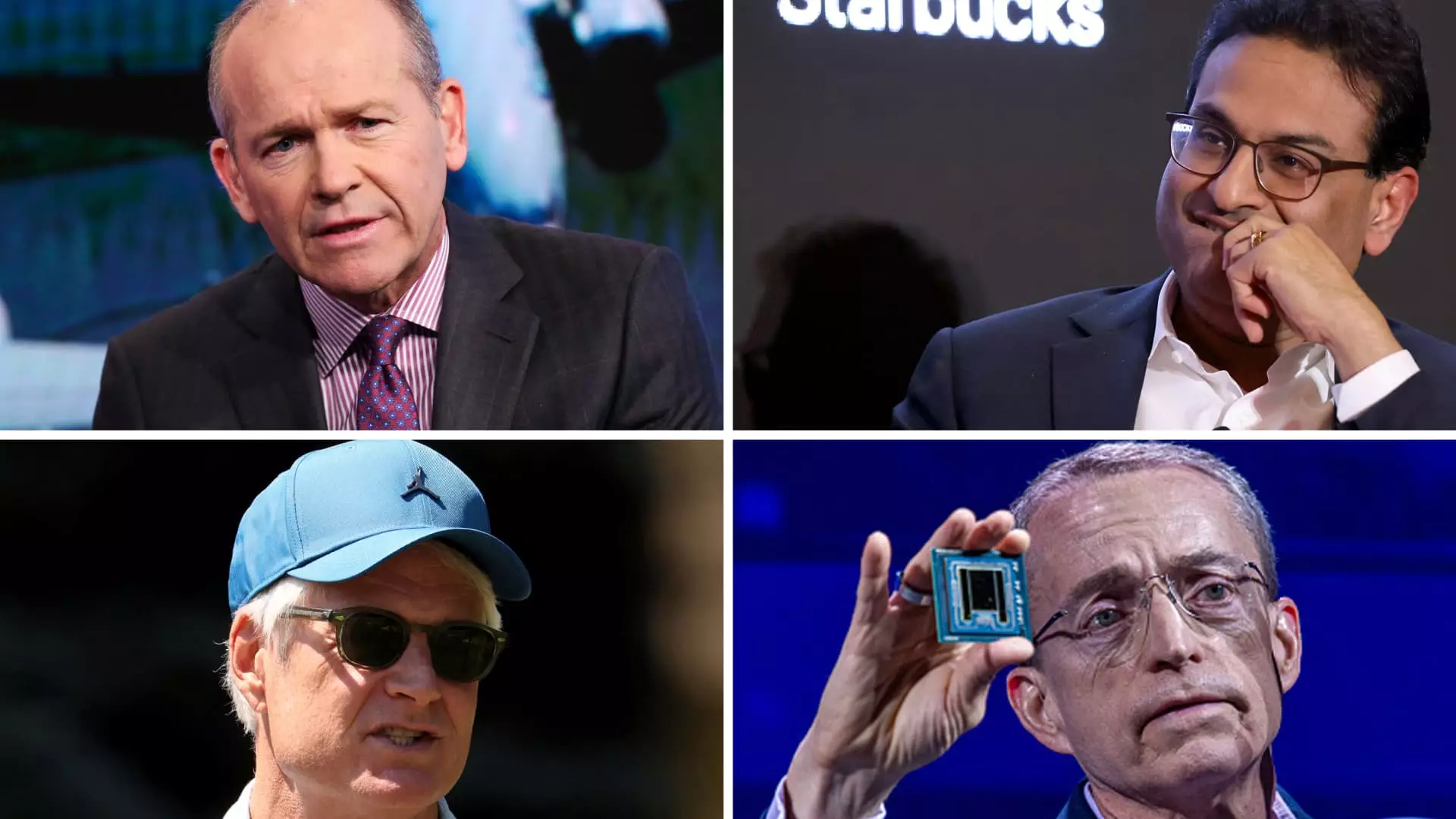In a striking trend, 2023 has marked a dramatic increase in CEO turnover across U.S. public companies, with 327 leadership changes recorded through November. According to Challenger, Gray & Christmas, this number represents a significant 8.6% rise from the previous year and the highest rate of turnover since the firm began tracking these statistics in 2010. This unprecedented shift reflects broader market dynamics, revealing how stakeholders—ranging from customers and investors to hedge funds—are increasingly intolerant of underperformance, even in a robust economic environment marked by consumer willingness to spend. Notable exits include leaders from industry giants like Boeing, Nike, and Starbucks, signaling a notable shake-up in sectors that have historically maintained stability.
The past few years have produced a complex operational environment for CEOs, juxtaposing periods of relative calm during the pandemic with a resurgence of pressures as the economy improves. When the pandemic took hold, executives navigated a landscape fraught with challenges like supply chain disruptions, remote work adaptation, and labor shortages. As the dust began to settle, however, new pressures emerged: rising interest rates, inflation, and shifting consumer behavior. These evolving concerns have caused boards and investors to recalibrate their expectations of corporate leadership. Clarke Murphy, managing director and former CEO of Russell Reynolds Associates, emphasizes that the dual forces of capital cost and market transformation are catalysts for quicker executive turnover than in past cycles. In years marked by significant stock market gains, inconsistent performers can easily find themselves under the microscope, leading to expedited decisions from company boards.
Several high-profile leadership changes that underscore the trend include the ousting of Intel’s Pat Gelsinger, who faced immense pressure in a rapidly evolving semiconductor market. Once tasked with rejuvenating the company, Gelsinger’s tenure ended amid intensifying competition from rivals like Nvidia, as Intel struggled to capitalize on the artificial intelligence boom. This situation exemplifies how market dynamics can rapidly alter the fortunes of even well-established leaders.
In the aerospace sector, Boeing’s former CEO Dave Calhoun exited following a series of crises surrounding safety issues and operational inefficiencies. His departure, just months after a serious in-flight incident, illustrates how critical leadership scrutiny becomes during periods of public concern over safety and performance. Kelly Ortberg succeeded Calhoun, bringing a rich background in aerospace management, reflecting Boeing’s strategy to stabilize its operations and restore investor confidence.
Meanwhile, Starbucks shifted gears by recruiting Brian Niccol, the former CEO of Chipotle, in an effort to rejuvenate its brand amid falling sales. Under Niccol, Starbucks aims to pivot back to its core identity and foster customer loyalty with strategic menu adjustments and operational enhancements. His appointment demonstrates how companies are actively seeking outside perspectives to ignite transformation in response to shifting market paradigms.
Industry Variations and Leadership Strategies
Interestingly, the turnover of CEOs varies significantly across industries. Retail and consumer-oriented sectors face higher rates of executive turnover due to their sensitivity to changing consumer preferences and market trends. Traditional sectors, such as oil and gas, tend to have longer tenured CEOs, remaining more insulated from abrupt leadership changes. The growing trend in consumer markets particularly highlights the importance of adaptive leadership—where the ability to respond to consumer insights and market demands is paramount.
This year’s wave of changes doesn’t only come from proactive strategy shifts. The departure of Peloton’s Barry McCarthy, for instance, came amid significant restructuring efforts after a pandemic-driven growth spurt turned into struggle as work-from-home dynamics shifted. His successor, Peter Stern, is expected to steer the company toward profitability through a stricter focus on its subscription model, a strategy viewed favorably by investors seeking sustainable revenue channels.
The Future of Corporate Leadership: Navigating Change
As we move towards 2024, companies must absorb the lessons of this year’s turnover rates. The increasing scrutiny on executive performance, the growing need for agile adaptation to market trends, and a renewed emphasis on stakeholder interests are all shaping the landscape of corporate leadership. The heightened departure rates can serve as a warning and wake-up call for those at the helm, illustrating that the margin for error is shrinking and decisive action is now mandatory for sustained success.
The surge in CEO changes in 2023 reflects deeper shifts in the corporate landscape, reinforcing the notion that today’s leaders must not just adapt to evolving business environments, but also anticipate stakeholder expectations and broader economic indicators to thrive.

